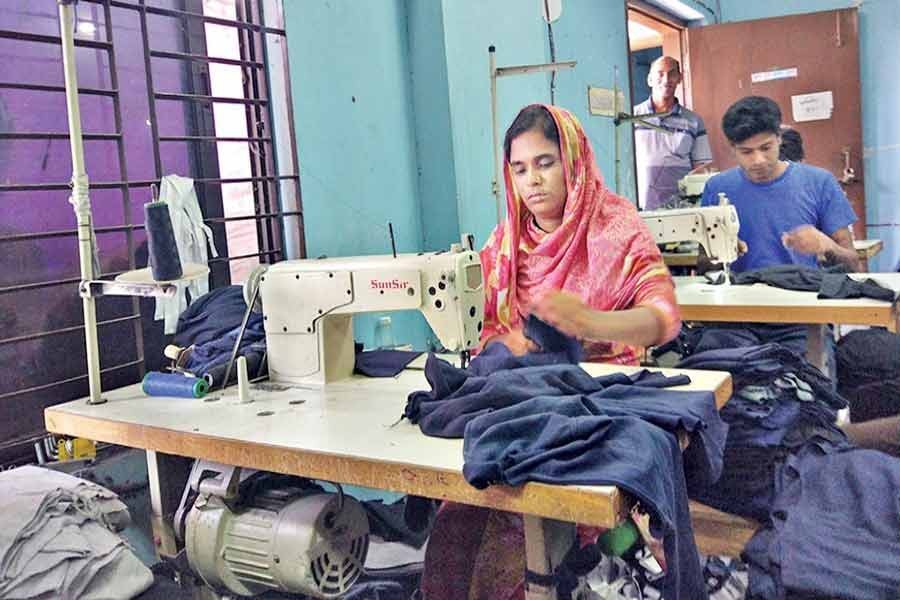Undeniably, there has been phenomenal progress in terms of agricultural growth and diversification. This can be attributed to farmers' untiring and uncomfortable toil, and the government-provided highly subsidised fertilizer as well as reduced cost of electricity used in irrigation. If we look at the data up to the publication of Bangladesh Economic Review 2018-19 ( the review of 2020 not yet published ) and BRRI's website, we observe that rice production increased 3.73 times during almost five decades after independence. Total food grains production in FY 19 was 415.74 lakh metric ton. Yield of Boro, Aman, and Aus paddy grew by 100 per cent, 134 per cenr and 223 per cent (between 1972 and 2017-18) respectively. Vegetables production surged by 5 times. Cropping intensity rose from 130 to 300 varying in different areas. The use of modern HYV in cultivating different crops expanded remarkably. How far has this growth enhanced small farm households' financial viability? Here, there are two concepts, 'small farm household' and 'financial viability' that need to be clarified.
According to Preliminary Report on Agricultural Census 2019 ( BBS ), farm households totalling about 1.66 crore constitute about 47 per cent of total households. The current proportion of small households would not be available until the final report on the census is published. However, we can have some indicative picture from the agricultural census 2008. A little over 84 per cent of total farm households constitute the small farmers (having operated land of 5 decimals to 249 decimals). The average operated land (excluding homestead area) is only 0.88 acre for a small farm but net area is 0.74 acre. Besides, 51.75 per cent of the small farm households have an average operated land of 0.47 acre each. Present percentage of small farm households is likely to range between 75 and 80 in view of income growth.
Based on a critical review of several studies (no scope to cite them here), it may be said that a farm household's viability refers to its capacity to recover the entire investment (current and previous debt dues plus equity portion) deployed in farm activities from the annual aggregate of gross farm income, off-farm income and net non-farm income earned by family member(s) after meeting annual family expenditure. A farm household may not have off-farm or non-farm income. Then only farm income would be taken into account. A hypothetical example of a viable farm household may be given. A household's farm investment is Tk.3,00,000 comprising own fund Tk.50,000, and bank loan Tk.2,50,000 at an annual interest of 8 per cent. Annual family expenditure is Tk.3,00,000. Annual gross income from farm production is Tk.6,30,000.There is no other source of income. The household's surplus stands at Tk. 3,30,000 after meeting family expenditure. Investment to recover is Tk.3,20,000 ( i.e. 3,00,000 + interest of 8 per cent on loan).The household is thus found viable as it can recover the full investment from the surplus. If the surplus shown falls below the recoverable investment, the household would be non-viable.
The viability of the farmers who propel the wheels of the agro-based economy is crucial. To maintain food production, farmers must survive. The concept of this survival is meant here to be the financial viability of farming households. Medium and large households are normally viable as per criteria explained. Our emphasis is on the small households' viability. The challenge facing the small farmers is to be able to recover the yearly investment (both equity and debt component) made in agricultural production after meeting family expenditure. Most of the small farmers run agriculture at the subsistence level. They lack adequate fund to invest in agricultural activities ( BB Agricultural and Rural Credit Programme and Policy 2020-21, National Agriculture Policy 2018 paragraph 1.8, and Seventh Five - Year Plan's sub-paragraph 4.3.1, Bengali Version).The concern about whether small farmers' becoming financially viable has been concomitant with spectacular growth in production of paddy and other crops is therefore logical.
The burning question is: how do small households whose average operated land is far less than an acre maintain their livelihoods? Only income and expenditure data on them are not enough to explain their real financial condition. Literature is replete with studies on agriculture but little is said about poor farmers' overall assessment of financial status or difficulties. Indebtedness, investment capacity, debt repayment capacity, and funding family expenditure are among the prominent financial variables. We hardly try or think of paying attention to these things.
What determines the viable status of a farm household? A farm household's viability usually depends on operated land area, cropping intensity, production volume and yield, output price, share cropping procedure, cost of production, cost of debt capital, risk level, family size, annual family expenditure, debt burden, net income from non-crop agriculture, service and business income. Household-wise data on all of these determinants are not available from the prevailing information system.
Obviously, focus has been more on the growth and diversification of agricultural production than on augmentation of small farmers' overall income considering their meagre size of cultivable land or having no land. Ensuring the viability of resource, poor farming community is absolutely necessary. This is an emergent issue which should be embodied in our national agriculture policy and strategy. The prerequisite is that the proposition on viability requires an empirical testing. If we intend to obtain analytical field information on a regular basis, investigating farm households' viability may be included in the scope and the objectives of routinely conducted Household Income and Expenditure Survey (HIES).
Haradhan Sarker, PhD, is ex-Financial Analyst, Sonali Bank & retired Professor of Management.


